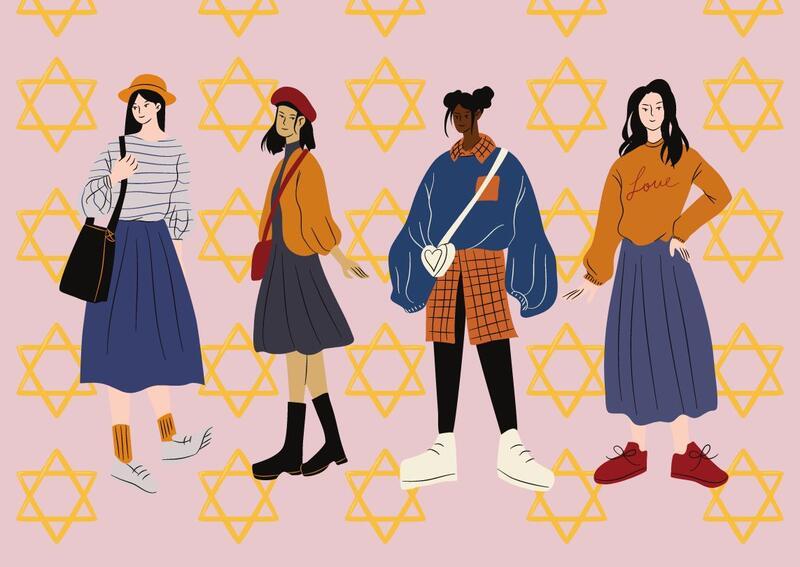The Harm of Modesty Policing
During middle school, we dressed according to the “Barchu test:” if we chose to wear skirts, they needed to be long enough that we didn't reveal anything when bowing during the Barchu prayer. Otherwise, for that or an assortment of other reasons, we would get dress-coded by our teachers. At the same time, our skirts needed to be shorter to be considered fashionable. We were constantly balancing expectations to be considered modest and attractive at the same time.
Privately, in coat rooms before services or in hotel bathrooms at shabbatons, my friends and I would review each other’s outfits. We would deliberate together, deciding if our outfits could be pulled up to be “more fun” or if they needed to be pulled down to avoid disappointed looks from the older women of the congregation and dress-coding teachers.
Judaism has plenty to say about tzniut—modesty. Laws primarily targeted at women which cover everything from which body parts we should not expose to the volume at which we should speak. Judaism centers the holiness of divine connection, and therefore distraction is a problem, especially in spaces dedicated to prayer. In Orthodox minyanim, a mechitza separates men and women. Orthodox Jewish leaders warn that men and women in shared spaces will lead to immoral (promiscuous) behavior.
According to this logic, the presence of a woman in a house of worship is a complication. A problem. Something that must be relegated with extensive rules. This is not a hypothetical situation but in fact a reality that is both personal and relevant for Jewish women like me. I have received looks for wearing skirts that didn’t reach my knees during my growth spurt and mutters for wearing formal pants that completely cover my legs. I have felt unwelcome even in dresses that cover me from collarbone to mid-calf.
Outfits that once made me feel empowered left me wondering if I deserved my place in the pews. I am not the only one. This affects countless Jews in countless synagogues. The experience can also be worse depending on one’s body type. It can feel like there’s no winning.
This can go hand in hand with the realities of the male gaze in the larger American secular context. Growing up in New York City, I learned from an early age to be careful with how I presented myself in public, towing the line between trying to dress stylishly to impress those around me and taking appropriate caution. As a confused and insecure adolescent, I wanted both external validation that I was fashionable but also to feel safe walking home. There’s only so much to be done in a place where men start catcalling at age 8 and stop by age 13. I have personally thought both “I’m so relieved they stopped,” but also “Am I no longer attractive?” Feeling like my value was my body—either as a commodity or as a distraction—robbed me of confidence and comfort. These cycles continue from generation to generation, with parents who internalized this question accidentally reinforcing the same narrative. And this culture did not start as hemlines shortened. It’s always been there, immersed in our texts and norms.
The Gemara instructs men not to look at a woman sexually or have such thoughts outside of the context of a marriage. While these instructions are not geared towards women, our community has largely put the burden on women to prevent these urges. Tropes about the fears of seduction date back to Eve in the Garden of Eden. Eve has been blamed for luring Adam into sin, even though it was the snake who manipulated her, and Adam fully consented to participating himself. That’s not even getting into the midrash of Lilith, who has been demonized for daring not to consent to sexual activities. The notion of women as distractions and problems was a concept even before clothes were.
Here then comes the duality: women must be modest and subdued to avoid causing problems, but also beautiful and appealing. In my personal experience, this balance is stressful, unfair, and almost impossible. Our self-expression is personal, as are our identities. Policing them only draws more lines between us. I look forward to the day when our bowing in prayer becomes about connection and not pulling down skirts in the back.
This piece was written as part of JWA’s Rising Voices Fellowship.







